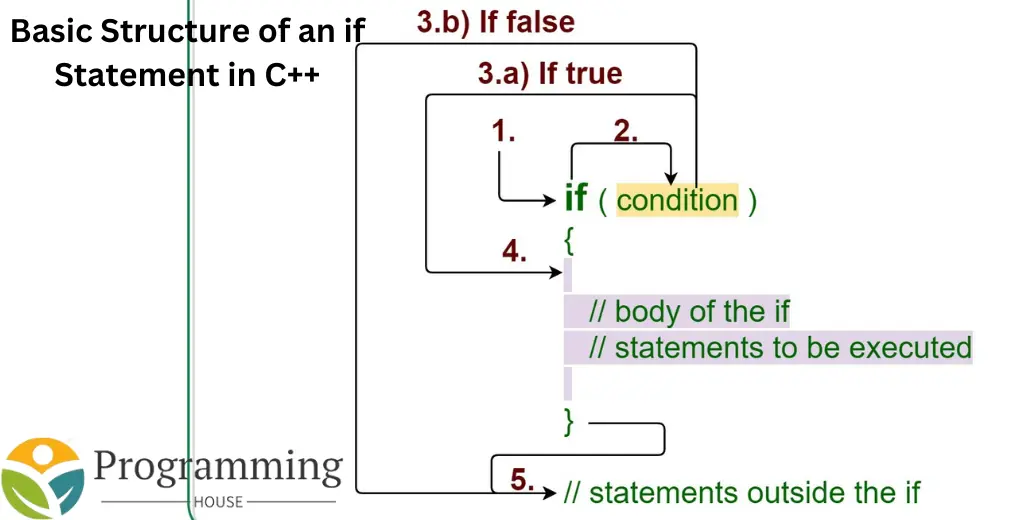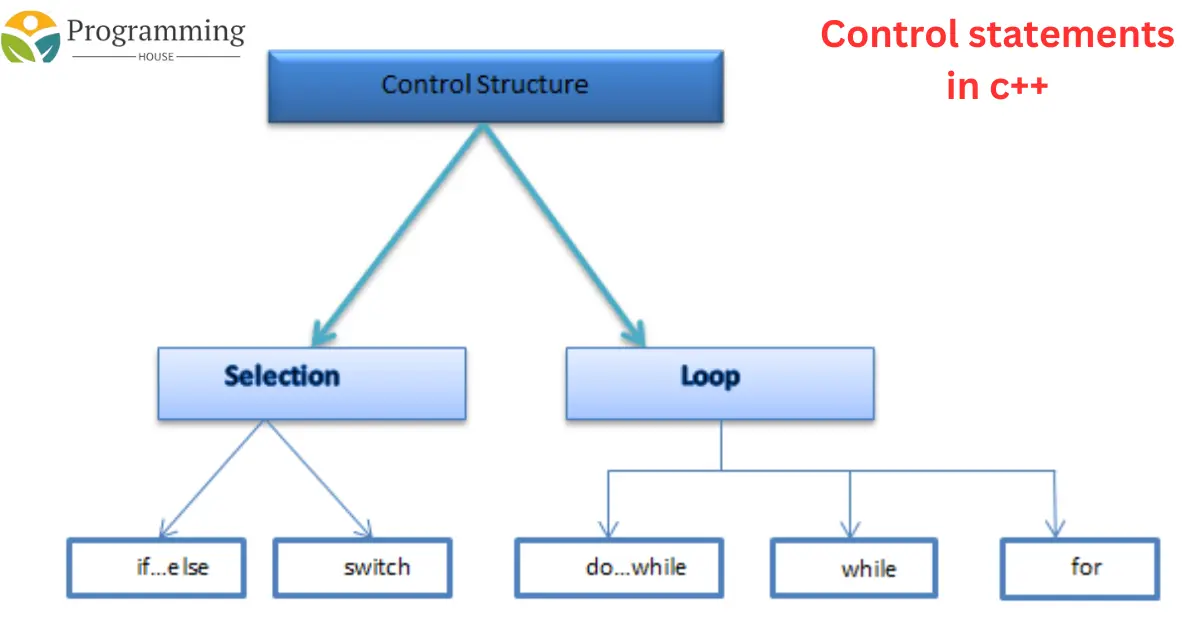Understanding Control Statements in C++
Control statement are fundamental to programming in C++, admitting developers to control the flow of execution inside a program. These statements authorize decision-making, looping, and separate, which are essential for designing dynamic and efficient law. In this article, we’ll investigate the different types of control statements in C++, containing their syntax, custom, and examples.

1. Conditional Statements
Conditional statement in c++ are used to perform various actions established different environments. The most common conditional statements in C++ are if, else if, else, and switch.
a. if Statement
The if statement allows you to execute a block of code only if a specified condition is true.
Syntax:
if (condition) {
// Code expected executed if the condition is true
}Example:
int age = 18;
if (age >= 18) {
cout << "You are eligible to vote." << endl;
}b. else if and else Statements
The else if statement allows you to specify a new condition to test if the first if condition is false. The else statement executes a block of code if none of the preceding conditions are true.
Syntax:
if (condition1) {
// Code to be executed if condition1 is true
} else if (condition2) {
// Code to be performed if condition1 is false and condition2 is true
} else {
// Code expected executed if two together condition1 and condition2 are wrong
}Example:
int score = 75;
if (score >= 90) {
cout << "Grade A" << endl;
} else if (score >= 80) {
cout << "Grade B" << endl;
} else if (score >= 70) {
cout << "Grade C" << endl;
} else {
cout << "Fail" << endl;
}c. switch Statement
The switch statement provides a way to execute one block of code out of many based on the value of a variable.
Syntax:
switch (expression) {
case value1:
// Code to be executed if expression == value1
break;
case value2:
// Code to be executed if expression == value2
break;
// Add more cases as needed
default:
// Code to be executed if no case matches
}Example:
int day = 3;
switch (day) {
case 1:
cout << "Monday" << endl;
break;
case 2:
cout << "Tuesday" << endl;
break;
case 3:
cout << "Wednesday" << endl;
break;
default:
cout << "Invalid day" << endl;
}2. Looping Statements
Looping statements allow you to repeat a block of code multiple times, which is useful when you need to perform repetitive tasks. The primary looping statements in C++ are for, while, and do-while.
a. for Loop
The for loop is used when the number of redundancies is known early.
Syntax:
for (initialization; condition; increment) {
// Code to be executed for each iteration
}Example:
for (int i = 1; i <= 5; i++) {
cout << "Iteration " << i << endl;
}b. while Loop
The while loop continues to execute a block of code because the specified condition remnants true.
Syntax:
while (condition) {
// Code to be executed as long as the condition is true
}Example:
int i = 1;
while (i <= 5) {
cout << "Iteration " << i << endl;
i++;
}c. do-while Loop
The do-while loop is similar to the while loop, but the code block is executed at least once before the condition is tested.
Syntax:
do {
// Code to be executed
} while (condition);Example:
int i = 1;
do {
cout << "Iteration " << i << endl;
i++;
} while (i <= 5);3. Jump Statements
Jump statements are used to alter the flow of control by transferring execution to another part of the program. The main jump statements in C++ are break, continue, goto, and return.
a. break Statement
The break statement is used to exit a loop or switch affidavit prematurely.
Example:
for (int i = 1; i <= 5; i++) {
if (i == 3) {
break; // Exit the loop when i equals 3
}
cout << "Iteration " << i << endl;
}b. continue Statement
The continue statement skips the current iteration of a loop and moves to the next iteration.
Example:
for (int i = 1; i <= 5; i++) {
if (i == 3) {
continue; // Skip the rest of the loop when i equals 3
}
cout << "Iteration " << i << endl;
}c. goto Statement
The goto statement transfers control to a described report within the alike function.
Syntax:
goto label;
// Some code
label:
// Code to be executed after the jumpExample:
int i = 1;
start:
cout << "Iteration " << i << endl;
i++;
if (i <= 5) {
goto start; // Jump back to the start label
}d. return Statement
The return statement exits a function and needlessly returns a value to the visitor.
Example:
int add(int a, int b) {
return a + b; // Return the sum of a and b
}
int main() {
int sum = add(3, 4);
cout << "Sum: " << sum << endl;
return 0;
}Conclusion
Control assertions are essential tools in C++ set up, providing the means to direct the flow of execution established conditions, loops, and jumps. Understanding by means of what to use these statements efficiently is crucial for writing effective and maintainable rule. Whether you’re making decisions accompanying if-else assertions, looping with for or while, or directing program flow with break and persist, mastering control charges is a key step in becoming a able C++ programmer.



